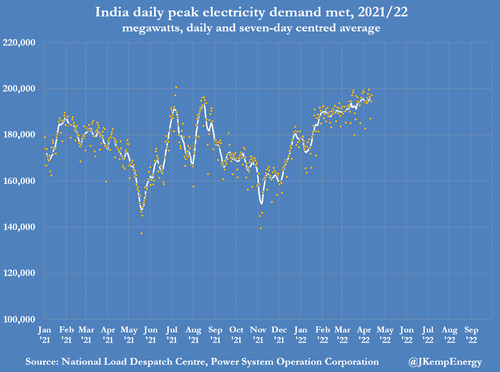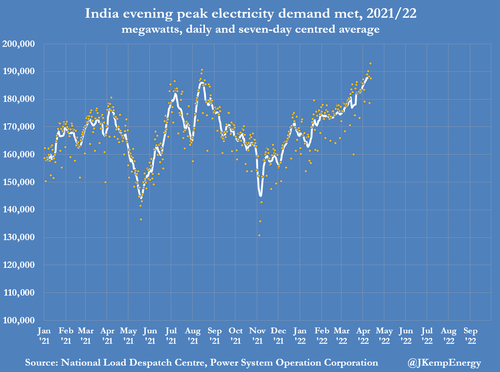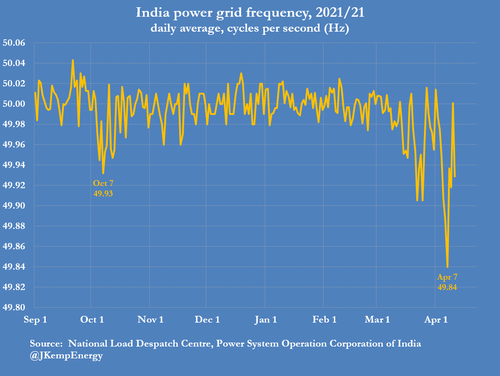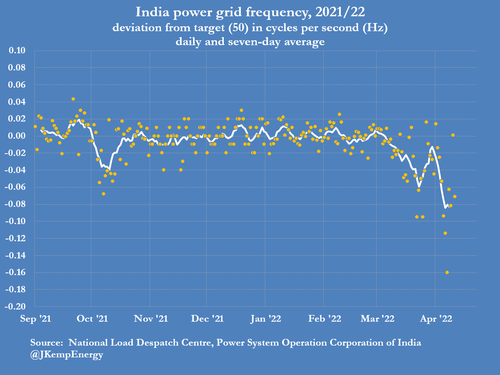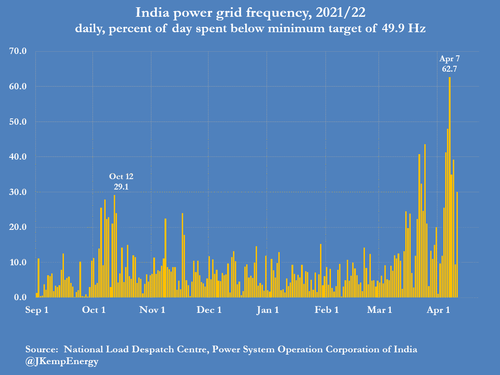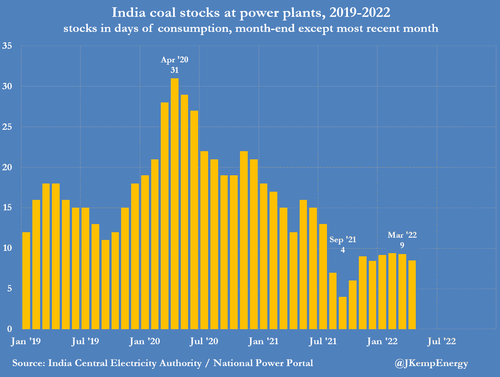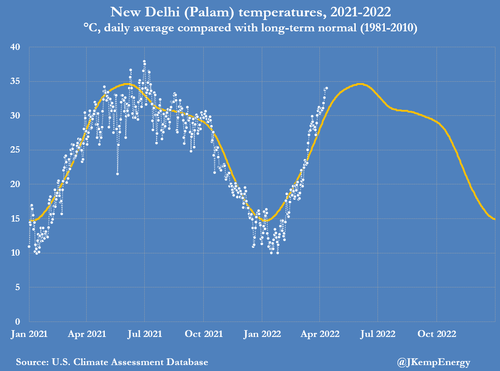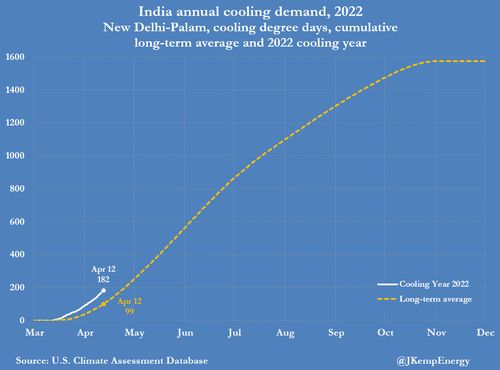India Facing Widespread Blackouts This Summer
By John Kemp, senior energy analyst at Reuters
India faces a persistent shortage of electricity over the next four months as rapid demand growth from air conditioners overwhelms the available generation on the network.
India’s grid reported a record load of 200,570 megawatts on July 7, 2021, at the height of last summer, according to the National Load Despatch Centre of the Power System Operation Corporation (POSOCO).
But since the middle of March, the grid has routinely reported maximum loads above 195,000 MW, including a peak of 199,584 MW on April 8 – less than 0.5% below the record.
In the evening, when there is no solar generation available and supplies are even more stretched, peak loads have hit a new record in recent days.
Exceptionally high loads have arrived far earlier this year, well before the most intense period of summer heat, implying the grid is in trouble.
In a symptom of the struggle to meet demand, the grid’s frequency has faltered since mid-March, dropping persistently below target, with longer and more severe excursions below the safe operating range.
Chronic under-frequency is a sign the grid cannot meet the full demand from customers and makes planned load-shedding or unplanned blackouts much more likely.
India has a frequency target of 50.00 cycles per second (Hertz), with grid controllers tasked with keeping it steady between 49.90 Hz and 50.05 Hz to maintain the network in a safe and reliable condition. Since the middle of March, frequency has averaged just 49.95 Hz and has been below the lower operating threshold more than 23% of the time.
On April 7, the average frequency fell as low as 49.84 Hz and frequency was below the lower threshold for 63% of the day, according to POSOCO data.
Frequency has been below target so often for so long in recent weeks it has sometimes appeared the system is operating according to a much lower informal target.
Low Coal Stocks
Power producers’ coal inventories remain very low, limiting their ability to run coal-fired units at full capacity to meet demand. Grid-connected generators hold coal stocks equivalent to less than 9 days worth of consumption compared with 12 days at the end of April 2021 and 18 days in 2019.
Inventories have not really recovered since falling to a critical low of just 4 days at the end of September 2021, when fuel shortages resulted in widespread power cuts.
Rapid growth in electricity demand ensured fuel consumption stayed strong during the traditional winter stock building period while high coal prices also discouraged restocking.
India’s rail ministry has announced coal from domestic mines and import terminals will be prioritised on the rail network through the end of June to try to increase stocks.
But the very low level of coal stocks at power plants at the start of the maximum annual demand period indicates power shortages are more or less inevitable over the next few months.
Air Conditioners
In contrast to widespread blackouts experienced in October last year, the current problem is the result of strong demand as well as supply problems. India’s grid is under increasing pressure from the rapid growth in load from commercial and residential air conditioners, boosting electricity consumption at all levels of coal stocking.
Temperatures in northern India have been unusually high for the time of year since mid-March, resulting in a rapid rise in electricity demand. Peak daily loads in the seven days centred on April 8 were more than 9% higher than the same period a year earlier.
In an effort to curb rising electricity demand, the government’s Bureau of Energy Efficiency has mandated a default setting of 24°C for air conditioners sold in India since 2020.
Users are free to override the default but the government is relying on inertia to establish 24°C as a standard comfort temperature. When average daily temperatures first rose above 24°C this year, for example at Palam in New Delhi on March 13, power demand surged.
The early arrival of hot weather means there have been 182 cooling degree days so far this year double the long-term seasonal average of 99.
But temperatures are likely to continue rising to a peak at the end of June or beginning of July, pushing electricity demand even higher over the next 2-4 months.
Given the grid is already struggling, it is unlikely to be able to serve higher loads between May and August, making load-shedding and other power cuts more or less inevitable during any period of unusually hot weather.
Tyler Durden
Wed, 04/13/2022 – 21:40
Zero Hedge’s mission is to widen the scope of financial, economic and political information available to the professional investing public, to skeptically examine and, where necessary, attack the flaccid institution that financial journalism has become, to liberate oppressed knowledge, to provide analysis uninhibited by political constraint and to facilitate information’s unending quest for freedom. Visit https://www.zerohedge.com

